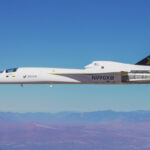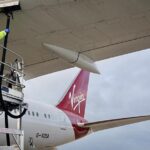US military to continue use of Link 16

For future warfighter space architecture
With the US Space Development Agency (SDA) advancing the Proliferated Warfighter Space Architecture (PWSA), its director, Derek Tournear, has confirmed that Link 16 will remain the primary communications option within the constellation of satellites, a system crucial for both US soldiers and their allies globally.
Link 16 is a military tactical data link network used by NATO members and other nations.
Tournear highlighted that one of the agency’s strategic objectives is to minimise changes to existing user equipment. “We’re fielding hundreds of satellites,” he said, “so we’ve taken the responsibility to modify these satellites to integrate with legacy radios, preventing the need for the [US] Army, Navy, and Air Force to replace tens of thousands of radios, which would be a monumental task”.
The PWSA system will eventually deploy hundreds of satellites in phases, with each successive tranche enhancing the system’s capabilities. These optically connected satellites will offer warfighters two core capabilities: beyond line-of-sight targeting for time-sensitive ground and maritime targets (such as mobile missiles and ships) and the ability to track and neutralise enemy missiles already in flight.
Tournear noted that Link 16 will remain integral to this system, with tens of thousands of these radio terminals already used by military personnel worldwide. “Our service members are already trained in these systems, and our infrastructure is designed to be compatible with tactical radios already in place,” he explained.
However, Tournear acknowledged that the US military and its allies require higher data transfer rates than Link 16 can provide. This is where laser communications come into play. “Certain missions demand higher data rates than Link 16 allows,” he explained. “Future operations will require large amounts of data to be transmitted quickly across aircraft and ground systems with low latency, capabilities that Link 16 cannot deliver. This is where laser communications are crucial.”
Although laser communications will never match Link 16’s widespread adoption, Tournear believes they will become increasingly important, with thousands of laser comms terminals expected to be deployed in the coming years.
From the outset of the PWSA development, laser communication technology was embedded in the plan. Demonstration satellites launched in 2021 successfully tested space-to-space and space-to-ground laser communications. These advancements will soon be incorporated into operational systems, with laser communications pivotal in Tranche 0 and continuing in Tranche 1. These systems will enable space-to-space, space-to-ground, and space-to-air communication, complementing the satellite constellation.
To optimise performance, Tournear explained that trade-offs were made to ensure laser communications work effectively for both space-to-space and space-to-air connections. This approach reflects the recognition that the electromagnetic spectrum is increasingly contested.
“The enemy can contest the spectrum, and obtaining spectrum approval is far more complex in the radio frequency domain than in the optical realm,” Tournear said. “Laser communications offer a distinct advantage in this regard.”
Featured image: A US Army member conducts a radio check at Hohenfels Training Area, Germany, on September 22, 2019. US military communication capability may be augmented with signals routed through space one day. US Defence Department engineers are working now to enable that capability. Credit: US Army













